JEREMY CUFF explores the iconic South Coast dive-site, a place of pilgrimage for many UK divers – and for good reason
Asked to contribute a feature on Swanage Pier, I probably had enough material already in the bag, having dived there several times in the past. However, the request gave me the impetus to have another stab at what is such a popular dive-site on the South Coast, drawing divers from far and wide.
The pier is located in the pleasant Dorset seaside town of Swanage, in the area known as Purbeck. It’s a nice place to visit on all sorts of levels. The pier is close to the town-centre and a sheltered beach that’s popular with families and sun-seekers. Combined with other local attractions, it makes an excellent destination for a weekend diving break, and can provide plenty for any non-divers tagging along to do.
Swanage Pier has featured regularly in my own diving journey over the years, initially when completing my PADI Advanced Open Water, where we used the flat expanses next to the pier for the navigation dive.
At other times, we dived it with mates, used it to check out our new DSLR underwater camera rig, took a very nervous diving friend on an easy dive, introduced our son Zac to UK diving, and most recently visited on a May Bank Holiday weekend on which I lucked into fabulous weather.
History of Swanage Pier
The original structure was completed in 1860 by James Walton for the Swanage Pier & Tramway Co. It was built primarily for shipping stone. Horses were used to pull carts along the narrow-gauge tramway that ran along the pier and seafront.
When a steamer service started between Swanage, Poole and Bournemouth in 1874, the pier was used to cater for both day-trippers and the stone cargo. It soon became clear that it would be unable to cope with this dual use, and it was decided that a new and longer pier was needed.
The first pile of the new pier was driven on 30 November, 1895 and it opened to traffic on 29 March, 1897. The first steamer landed people in May 1896, with the last doing so in August 1966.
In 1940, the landward end of the pier was blown up as an anti-invasion precaution, but after WW2 in 1948 steamer traffic was reinstated. After 1966 the pier was left to deteriorate for almost 30 years.
In 1994, the Swanage Pier Trust acquired control of the Pier Company, with the aim of keeping it open to residents and visitors and providing for its eventual total restoration. Much money has been spent on restoring the timber structure, with renovations financed by sources such as the National Lottery and English Heritage.
At the time of writing in early May 2018, the pier is undergoing further restoration work designed to secure its ongoing future. The work is scheduled to be completed by August, though like many construction (or reconstruction) projects, they have a habit of over-running. By the time you read this, the works should be finished or nearly finished.
Arriving at the site
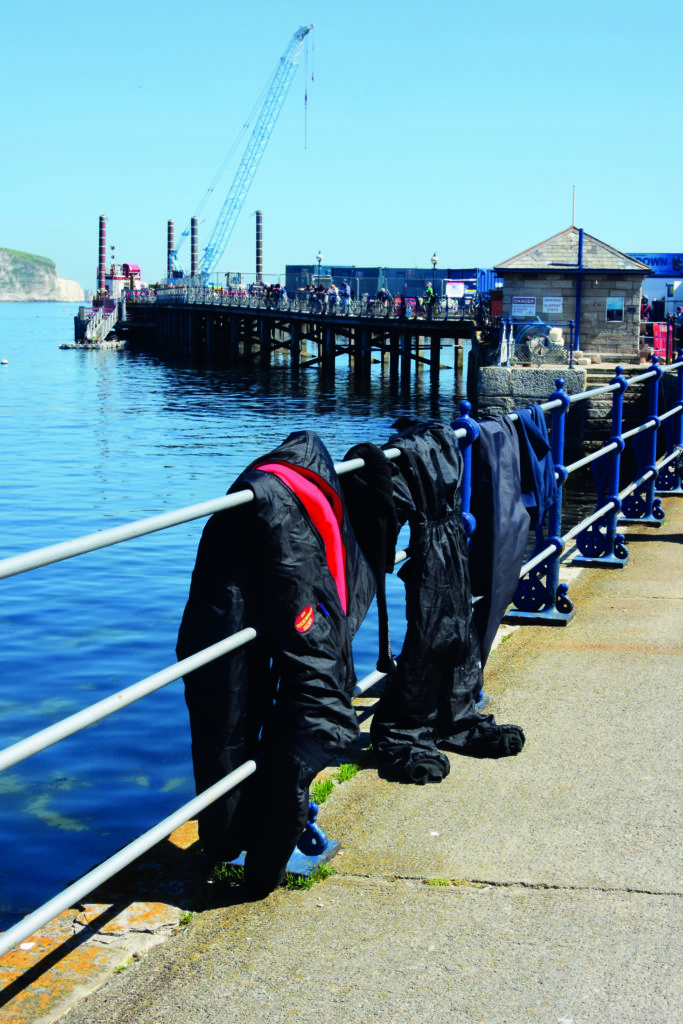
The pier can be accessed by scuba divers’ vehicles via an entrance gate and there is limited parking on a “first come first served” basis (£9 for a full day). This means an early start, which might or might not be to everyone’s taste. Even if you arrive at 6.30am, expect to see a queue starting to form, especially on good-weather weekends, such as on my recent visit.
If staying overnight, it can be a bit of a faff getting your gear from your accommodation into the vehicle in time to get onto the pier by 6.30am-7am. I drove my pick-up to the pier at 6.30am to ensure that I got a space, and then had breakfast after I’d parked.
If the pier parking is full, it’ll turn your pleasant day of diving into a less-enjoyable experience, because you’ll have to transport dive-kit from another car park uphill from the pier (helpfully, the pier management does provide trolleys for that purpose). Nabbing a pier parking space is definitely key to the day.
Dive briefing
Even when conditions don’t allow elsewhere, Swanage Pier is always in contention as a reliable place to dive (so far as that’s possible with coastal sites). It is therefore a good fall-back site, though that isn’t to say it’s in any way inferior to local boat-dives.
Unhelpful weather to watch out for is an easterly wind, which can send waves into the bay and destroy the visibility, so it’s worth keeping an eye on the weather forecast.
In terms of tides, the range isn’t huge in this area, so it’s possible to dive at any time, though it is much easier when the tide is higher. On my visits there has never been any appreciable current, though you might experience surge if any waves are blowing in.
The dive itself is very shallow, with the deepest depth I can remember attaining being about 5m at the very end of the pier at high tide. Overweighting yourself is probably the way to go here, to ensure that you’re able to stay down rather than accidentally bobbing up (perhaps risking clunking your head on a beam in the process) or spending the whole dive kicking to stay down, which isn’t much fun.
To enter the water, you normally have three choices. Most popular are the steps on the seawall next to the gent’s toilet, or else there’s a lower platform on the pier itself with a ladder. Some dive-boats arrive and depart from this section, so care must be exercised.
Similarly, the “on-pier” dive-centre (Divers Down) has a pontoon that divers can use as an entry-point, though boats are also coming and going from here, so you must be vigilant and sensible (it probably doesn’t encourage using this).
If using the seawall steps, great care should be taken to avoid any slippery seaweed that could cause a nasty fall. When entering the water here, it can also be tricky keeping your footing while navigating slimy, uneven pebbles as you wade into deeper water. Visibility once submerged can also vary tremendously, so buddy-pairs should keep close to avoid getting separated.
The dives
Wherever you choose to enter the water, you have two basic choices; stay under the main pier or swim out to the standing legs of the old pier. If visiting the latter, it’s worth checking this out visually for orientation before entering the water, to ensure that you don’t miss them and avoid the hazard of the dive-boat pontoon.
Essentially, under and around Swanage Pier offers naturalist dives combined with vistas of its structure and discarded former pier legs. It’s the kind of place where an observant diver who is in no hurry can be rewarded with some interesting sightings.
The dive is quite popular with photographers, because it offers good macro subjects and even wide-angle possibilities if the visibility is good. On my last visit, the shafts of light peeking through even reminded me of diving Bonaire’s town pier many moons ago.
It’s really a case of moving slowly and looking carefully to see what you can see. On previous visits I’ve seen lobster, flounder and John Dory. Most recently I spotted what I believe was a baby spider crab and saw a large school of grey mullet around the old pier legs (sadly, not close enough for photography).
Closing Thoughts
Swanage Pier is a perennial diver favourite that’s shallow and suits all abilities and interests, good for training dives, marine-life spotting and photography. Some combine it with other dives in the area, many of which depart from the pier itself.
It’s also quite sociable in that it’s easy to meet other divers (sounds like a diver dating venue!) to learn about recent sightings, prevailing conditions and the dive experiences they have had. Swanage Pier is a good place. If you haven’t done it yet, perhaps it’s time to get yourself inducted!
Swanage Pier, Dorset
Type of Dive
Very shallow shore dive (easier at high tide).
Depth
Exact depth will vary depending on tides and where you choose to go, with the maximum being 5m. Ensure that you have sufficient weight to stay down.
Look Out For
Spider, edible and velvet swimming crabs, tompot blennies, pipefish, wrasse, bass, flounder, prawns, anemones, jellyfish and blennies. You might also be lucky and see lobster, cuttlefish, scorpionfish, schools of grey mullet and even John Dory or anglerfish. Who knows, there might be seahorses somewhere around the pier, because they’re known from nearby Studland Bay.
Visibility
Variable depending on wind direction, run-off and other factors, but can be 6-8m if you’re lucky. On less-ideal days, it’s very much reduced. An average is probably 3-4m.
Seabed
Flat with sandy expanses, extensive weed/seagrass beds, occasional rocks, rubble patches, discarded pier legs and beams.
Hazards
Boat traffic, low visibility, disorientation (surprisingly easy in poor visibility), slippery steps, rocks/boulders (when entering/exiting the water), fishing-line, sharp edges, overhead beams.
Accommodation
There’s a big choice in Swanage and its environs to suit all budgets. On my most recent trip, I chose a B&B close to the pier. There are plenty of these, hotels and apartments in and around the town, and for those wishing to camp there are options in the area.
Fills or other dive-related requirements are supplied by Divers Down, and pier opening times can be found on the Swanage Pier Trust site.
Photographs by Jeremy & Amanda Cuff
Also on Divernet: Shrimp Hunt In Swanage, Wreck Tour 47: The Kyarra, The Valentine Tanks Swanage, Wreck Tour 137: The Castlereagh
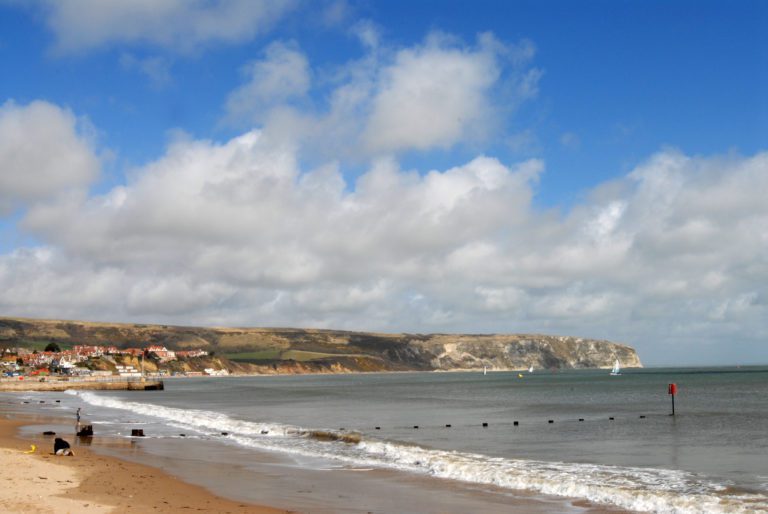

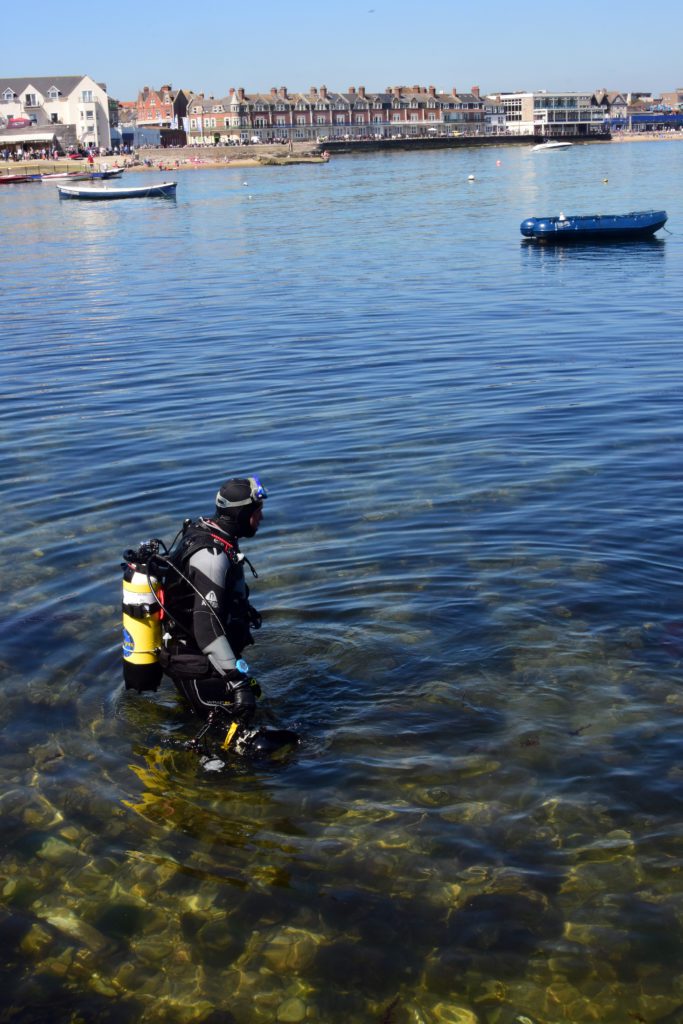
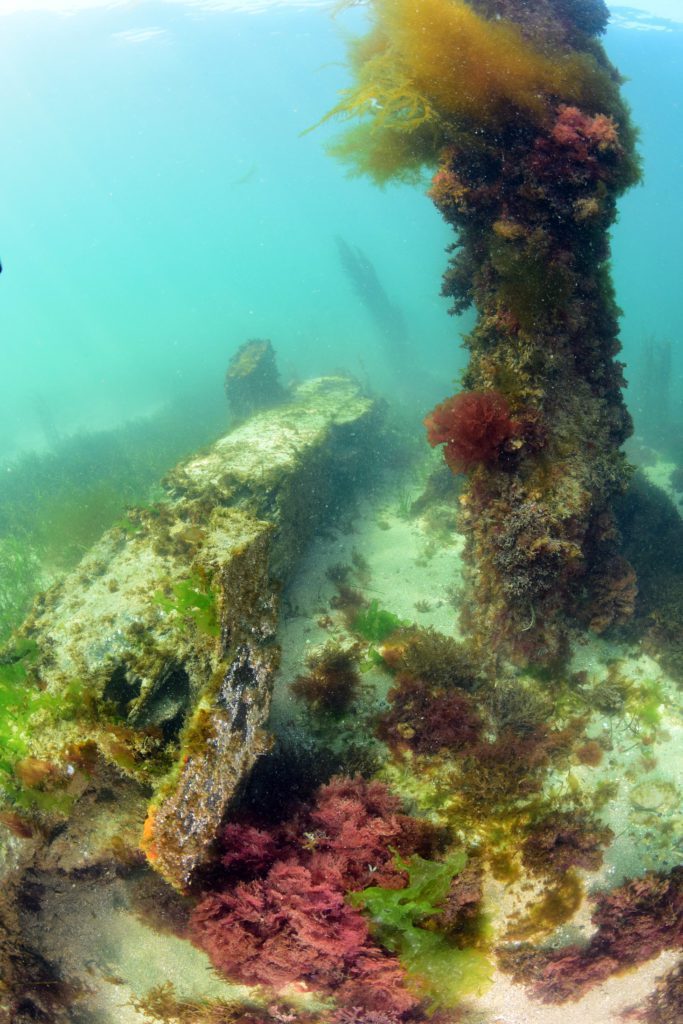




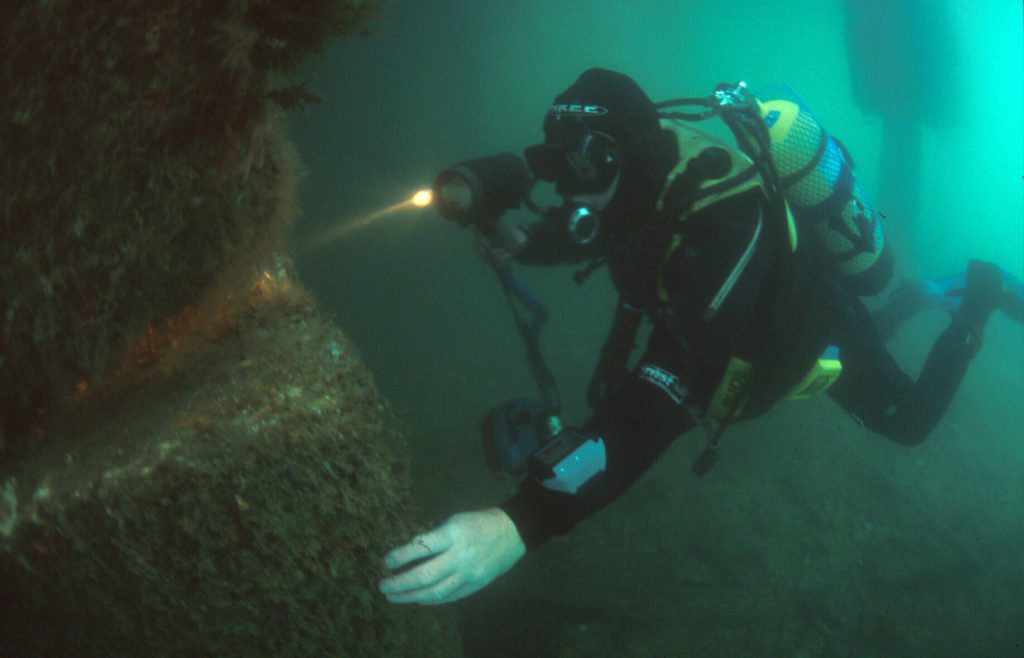
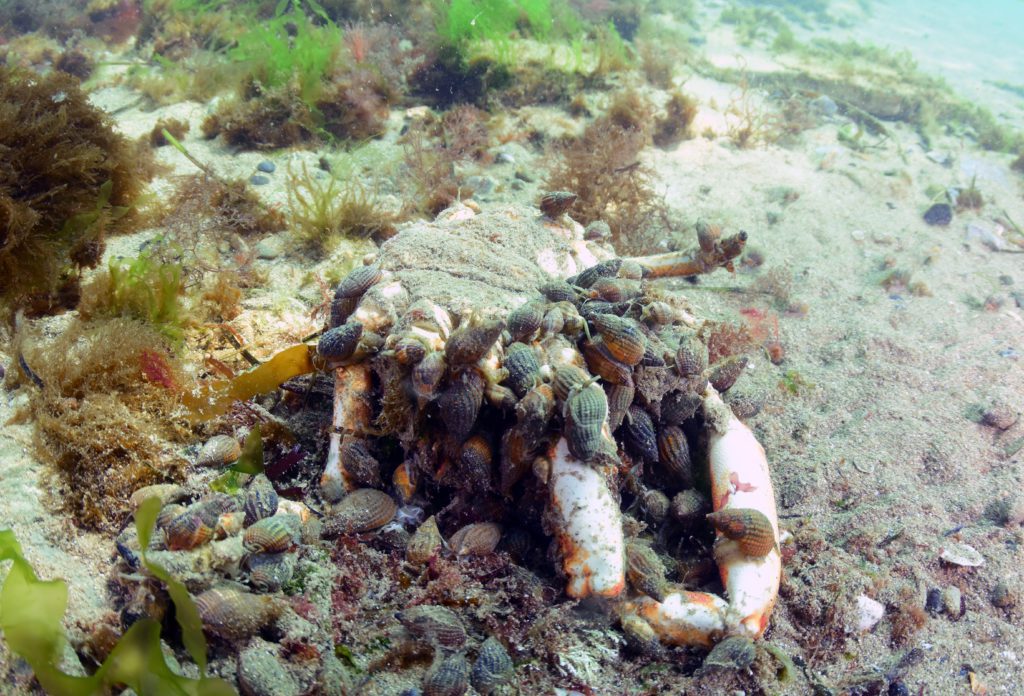

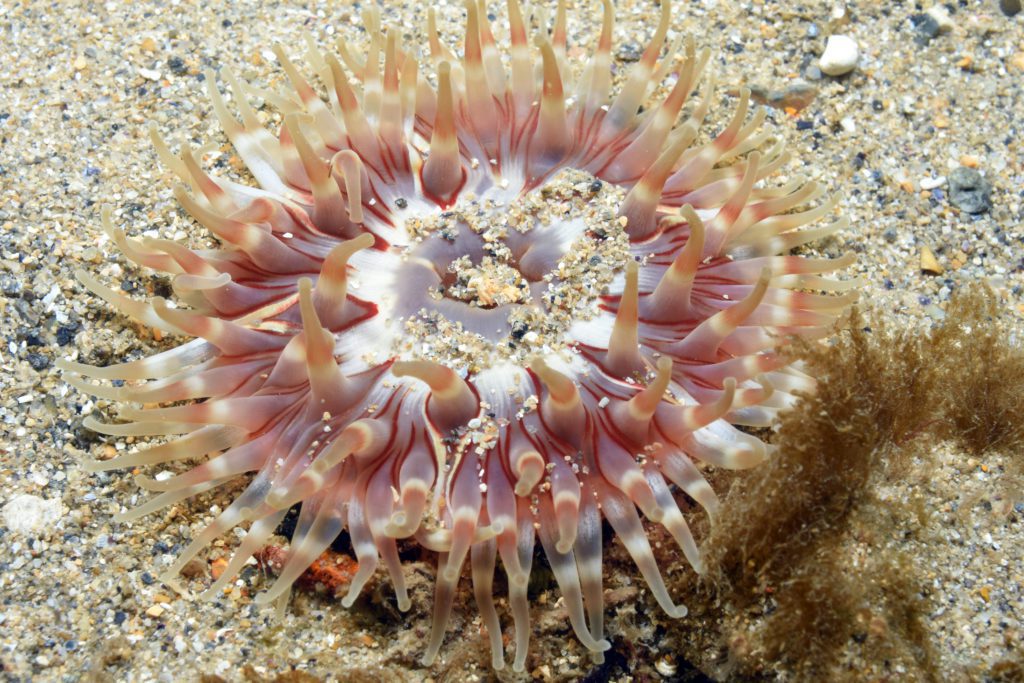
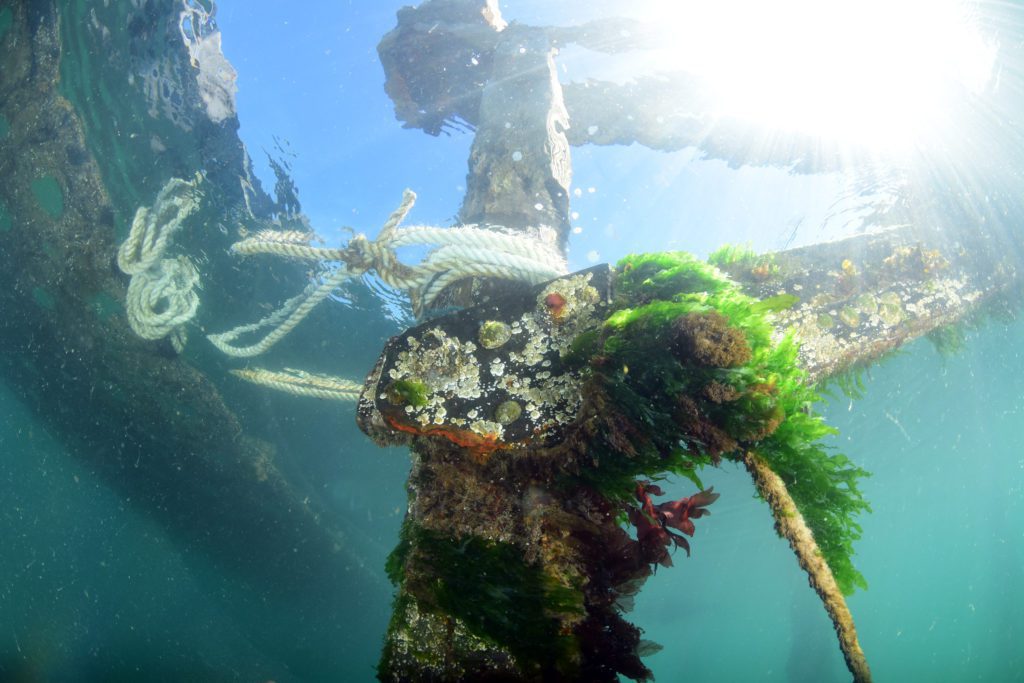
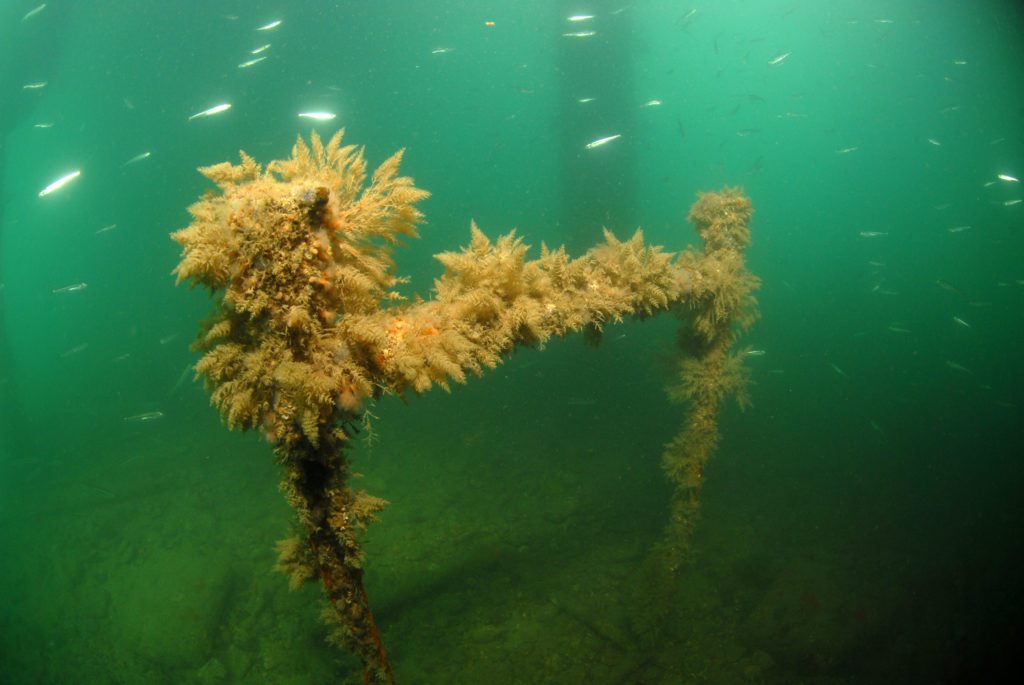

If you are diving or planning to dive The Swanage Pier it is worth considering looking into a dive on the Kyarra or Valentine Tanks. If time and money allows do all 3.